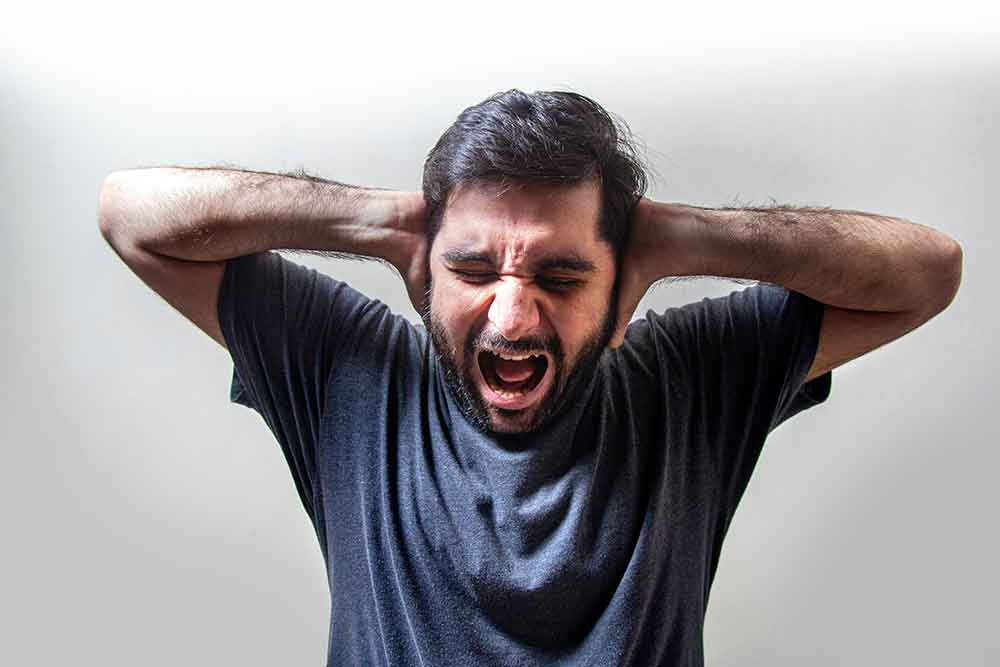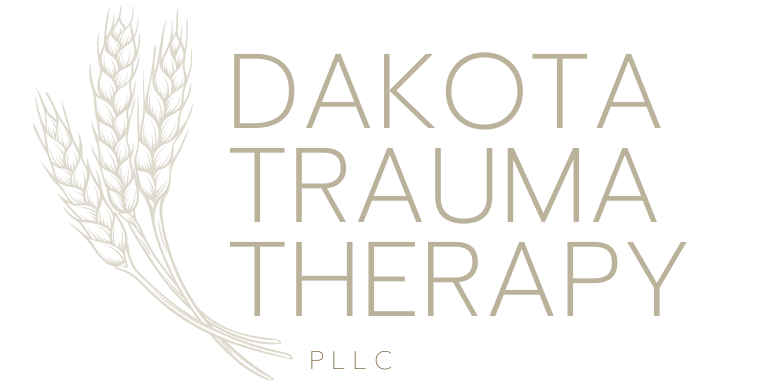Have you ever been nervous before giving a speech or attending a social gathering? You know how nervous you get when your hands start sweating, your mouth becomes dry, your heart begins pounding, and you feel like you are about to pass out.
If you have severe stage fright or performance anxiety, you may be prescribed propranolol to help you control your symptoms. Propranolol was created to treat chest discomfort caused by heart disease, but it is now mostly used to treat or prevent illnesses such as atrial fibrillation, high blood pressure, and migraine. (1)
Propranolol has been taken off-label for years to aid with physical anxiety symptoms. Propranolol has been used to assist musicians, public presenters, and students relax. (2) However, there are a few points to keep in mind before you begin.
Propranolol, commonly known by the brand name Inderal, belongs to a class of drugs known as beta-blockers, which work by inhibiting hormones like adrenaline and lowering blood pressure.
Since beta-blockers influence stress hormones norepinephrine and epinephrine, beta-blockers for anxiety is a well-known and extensively used treatment. These hormones are responsible for the physical symptoms of anxiety, and suppressing them reduces their effects, so aiding in the regulation of some of the physical symptoms. (3)
Although propranolol is not designed to be used as an anti-anxiety medication, it might make you feel calmer. Propranolol can aid in the reduction of heart rate. When we are stressed, our heart rate increases. This surge tells the brain that our bodies are terrified, which they should be. This merely adds to the anxiety. If you take away your ability to quickly increase your heart rate, your heart can communicate to your brain that it is not as terrifying as it appears. The brain receives soothing signals when our heart and body are quiet. Anxiety is lowered as a result of this. (4)
We will go through all about propranolol, what it is, how it works to treat anxiety, and what other issues it can assist within the following part.
What is propranolol?
Propranolol, usually marketed under the trade name Inderal, is a prescription medicine used to treat and manage cardiovascular disorders as well as several other ailments such as migraine, essential tremor, and pheochromocytoma, a tumor that forms in the adrenal glands above the kidneys.
Since the medicine lowers blood pressure, it is occasionally administered off-label, or for a purpose that has not been approved by the US Food and Drug Administration (FDA), to assist treat symptoms of performance anxiety and social phobias.
If you have ever had performance anxiety, you are well aware of the symptoms, which include a racing heart, clammy palms, and a feeling that you are about to vomit. A healthcare physician may prescribe taking a beta-blocker like propranolol before a public speaking or musical performance, for example, to decrease sensations like these.
Propranolol is available in oral tablets with immediate and prolonged release, as well as an intravenous injectable formula and a liquid version for people who have difficulty swallowing pills. It is provided in 10 mg, 20 mg, 40 mg, 60 mg, and 80 mg doses. Higher dosages of 120 mg and 160 mg are available in the extended-release formulation.
The dosage will vary based on the reason for the prescription. The immediate-release form of propranolol can be taken 2-4 times per day, whereas the extended-release version is given once daily. Propranolol can only be obtained through a doctor’s prescription.
How does propranolol work for anxiety?
Adrenaline is prevented from connecting with the beta receptors in your heart by propranolol. It prevents adrenaline from making your heart beat faster or stronger. It works by activating receptors on the cell surface. When a certain chemical binds to a receptor, it causes it to change shape, alerting the cell to perform a specific function. Propranolol works by preventing the stress hormones adrenalin and noradrenalin from activating beta receptors. (5)
Beta-1, which is predominantly found in the heart (6), and beta-2, which is found in a range of body parts, including smooth muscle cells in the bronchial tubes and veins, are the two kinds of beta-receptors discovered in humans. (7)
Propranolol is a non-selective first-generation beta-blocker that blocks both beta-1 and beta-2 receptors and affects the heart, kidneys, lungs, gastrointestinal system, liver, uterus, vascular smooth muscle, and skeletal muscle. As a result, it can induce lower cardiac output and renal output, among other functions.
The hormones adrenaline and noradrenaline are unable to reach their target and cause the reaction as a result of this. By disrupting the normal hormone-receptor interaction, propranolol lowers blood pressure by slowing the heart and forcing it to pump less forcefully. (8)
Adrenaline and noradrenaline, which are stress hormones, may make you feel worried, shaky, and sweating, as well as stimulate anxiousness and push you to choose in tough situations. (9) When you are in danger, fight-or-flight is a survival mechanism that protects you. If you have an anxiety problem, it can interfere with your ability to perform in front of others, meet new people, or make small chats with a friend or stranger. (10)
Precisely, propranolol blocks the physical symptoms of anxiety by preventing adrenaline and noradrenaline from activating your body’s beta receptors. When you are in a situation that makes you feel fearful or anxious, you will not notice a quicker heartbeat, sweaty hands, or shaking. Instead, your heart rate will reduce somewhat and you will feel more relaxed, making it simpler to go through your daily activities properly when you are anxious.
Effectiveness of propranolol for anxiety

In a 1998 trial, five ophthalmology resident physicians were given propranolol or a placebo for surgical performance anxiety and tremors. Surgical residents were given a propranolol 40 mg tablet 1 hour before 40 different surgeries in the research. Propranolol dramatically reduced anxiety and tremors without having any detrimental effects on the surgeon or the individual undergoing surgery, according to the findings. (11)
Propranolol was compared to benzodiazepines, a frequent first-line medication for anxiety (12), in a meta-analysis published in 2016. Both types of medicines were shown to be beneficial in treating panic disorder and agoraphobia by the researchers, while propranolol did not outperform benzodiazepines. According to this study, there is no need to consider propranolol before benzodiazepines in the vast majority of individuals. (13)
For certain anxiety types like performance anxiety, a 2015 review paper revealed that propranolol may function better as a short-term treatment rather than a long-term treatment just like anxiety bracelets or fidget toys for anxiety. This implies that using propranolol daily may not be beneficial for diseases like generalized anxiety, which require long-term therapy. (14)
A single dose of propranolol administered after being exposed to a tarantula, according to researchers from a 2015 study, might eradicate symptoms of spider phobia for at least a year. This might be because propranolol affects the way the brain stores fearful memories. Although the research sample was small, the results are promising. (15)
Propranolol when given before six weekly trauma reactivation sessions resulted in clinically substantial and long-lasting decreases in post-traumatic stress disorder symptoms. Propranolol, a beta-adrenergic–receptor blocker, lowers somatic sensations of anxiety such as tachycardia and perspiration and can diminish phobic reactions to spiders when used in combination with in vivo exposure. Propranolol mixed with trauma activation decreased symptoms of post-traumatic stress disorder in open experiments. (16)
The right dosage of propranolol for anxiety
Propranolol is a prescription medicine, therefore you will need to speak with your doctor before using it. It is offered in four distinct forms, a tablet, an extended-release capsule, an oral liquid solution, and an injection. Propranolol is commonly taken as an oral tablet if you have an anxiety problem.
For anxiety, propranolol 10mg pills are commonly accessible. This little dose of propranolol is frequently sufficient to alleviate the physical symptoms of performance anxiety. The proper Propranolol dose for anxiety differs from person to person; if 10mg is not enough to relieve your anxiety symptoms, you can boost your dosage to four 10mg pills before an event or you can use this propranolol dosage for anxiety up to three times per day.
It is critical that you do not take more propranolol than your doctor or pharmacist has advised for your condition. As your heart rate and blood pressure drop, you may have undesired side effects or an overdose, which can include light-headedness, blurred vision, and even fainting. It may cause serious cardiac issues.
Take the missing tablet as soon as possible if you miss a dose. If it is almost time for the next dose, skip the first one and go back to your usual routine. To make up for a missing tablet, never double your dosage.
How long does propranolol take to be effective for anxiety?

Situational anxiety symptoms can be relieved immediately with propranolol. In as little as half an hour and in some cases as little as 20 minutes, it can help to alleviate peripheral symptoms including perspiration, stress, and tachycardia. If you are frightened and apprehensive about a stressful scenario, event, or performance, such as a job presentation, an interview, or a test, you should take Propranolol 30 to 60 minutes beforehand.
It may take a few hours for some individuals to experience the effects of Propranolol, so it is a good idea to try it out first before administering it for the first time in a circumstance you are concerned about.
When is the ideal time to take Propranolol to help with anxiety?
Several factors influence the ideal timing to take propranolol for anxiety. If you are taking Propranolol for performance anxiety, take your regular dose around half an hour before the circumstance or event you are nervous about starts.
If you are taking Propranolol during the day for general anxiety, you can take it at frequent intervals. Take one 10mg pill three times a day to begin. However, before increasing or lowering the dose, you should see your doctor. It can be taken with or without meals, so you do not have to worry about timing it to coincide with mealtimes.
Interactions of propranolol with other drugs
Many drugs interact with propranolol, some mildly and some severely. Some of the most important medication interactions to be aware of are listed here.
Antiarrhythmics
Antiarrhythmics are drugs that modify heart rhythm, might increase the risk of adverse effects when used with propranolol. Amiodarone, digoxin, lidocaine, propafenone, and quinine are examples of antiarrhythmic medications that may interact with propranolol. (17)
Calcium channel blockers
When propranolol is used with calcium channel blockers, the risk of adverse effects such as low blood pressure and a sluggish heart rate rises. Diltiazem, nicardipine, nisoldipine, nifedipine, and verapamil are some of the common examples of calcium channel blockers. (18)
Hypertension drugs
When used with propranolol, the effects of blood pressure drugs such as alpha-blockers and angiotensin-converting enzyme (ACE) inhibitors are amplified, causing blood pressure to drop excessively low. (19) Doxazosin, enalapril, lisinopril, prazosin, and terazosin are among common examples.
Monoamine oxidase inhibitors (MAOIs)
Monoamine oxidase inhibitors are a class of drugs used to treat depression and other mental illnesses. When MAOIs are used with propranolol, the risk of adverse effects increases. (20) Isocarboxazid, phenelzine, selegiline, and tranylcypromine are examples of MAOIs.
Non-steroidal anti-inflammatory drugs (NSAIDs)
Non-steroidal anti-inflammatory medicines (NSAIDs) are a class of drugs that relieves pain, decreases fever, prevent blood clots, and reduce inflammation in large doses. They can, however, reduce the efficacy of propranolol. Aspirin and other nonsteroidal anti-inflammatory drugs (NSAIDs) may counteract propranolol’s blood-pressure-lowering effects by inhibiting the activities of prostaglandins, which are important in blood pressure control. (21)
Diazepam
Valium is a brand name for the drug diazepam, which is used to treat anxiety disorders. Propranolol raises diazepam levels in the body, which raises the likelihood of adverse effects. (22)
Warfarin
Warfarin is a blood thinner that keeps clots from forming. Warfarin levels in the body may rise when taken with propranolol, increasing the risk of bleeding. (23)
Side effects of propranolol

Propranolol is a safe and effective medicine that has been used to treat heart problems, anxiety, and other ailments for decades. Although side effects are usually minor and infrequent, they can nevertheless occur, especially when you first start taking the medicine. The following are some of the most common propranolol adverse effects:
Sluggish heart rate
Propranolol can produce a sluggish heart rate because it suppresses the effects of adrenaline on the heart. It is very natural for your heart rate to drop after taking propranolol. However, if your resting daytime heart rate falls below 50 beats per minute while taking propranolol, you should get in touch with your health care provider.
Sleep problems
While using propranolol for hypertension, there have been complaints of sleeplessness, nocturnal awakenings, and other sleep issues. Several beta-blockers have also been related to strange and vivid dreams. (24)
Dry eyes
Propranolol and other beta-blockers can induce dry eyes, which can cause discomfort in the eyes. (25)
Hair loss
Propranolol is one of many beta-blockers that can cause hair loss. Propranolol-induced hair loss is transient and is caused by the medication prematurely initiating the shedding phase of some hair follicles.
Fatigue
For its impact on how your body responds to stress hormones, propranolol might make you feel more exhausted than usual. This happens most frequently when you initially start taking the drug and normally goes away within a few days or weeks.
Diarrhea
Some individuals who use propranolol may have diarrhea quickly after starting to take it. Nausea is also one of the side effects of propranolol, especially in the initial few weeks of treatment.
Who should not take propranolol
Propranolol should be used with caution by some groups of people, while it should be avoided by others since it might aggravate problems including heart failure, liver disease, myasthenia gravis (muscle weakness), renal disease, and circulation-related ailments such as peripheral vascular disease or Raynaud’s disease.
People with diabetes, bradycardia (slow heart rate), and low blood pressure are among the other at-risk populations. Propranolol should not be used by anyone who has asthma, emphysema, or chronic obstructive pulmonary disease. There is not enough evidence to say if propranolol is safe for pregnant women. If you are breastfeeding, talk to your doctor before taking this drug because it has been proven to go into breast milk.
Either you are on propranolol for anxiety or high blood pressure, making lifestyle adjustments might help you feel better. Stopping smoking, exercising frequently, eating a nutritious diet, and stress management are all effective approaches to lessen anxiety symptoms and maintain a healthy heart.
Be certain to tell your healthcare practitioner about any additional medical issues you have before taking propranolol.
Conclusion
Propranolol may be able to help you relax before a major speech or performance by calming your nerves. Propranolol is a prescription drug that prevents your body from producing an adrenaline response by blocking neurotransmitters. This is why it is used to treat anxiety off-label. Propranolol is best utilized as a short-term treatment, according to research. It has certain negative effects, such as weariness and dizziness, as do all drugs.
Propranolol has several approved applications, including high blood pressure, migraine prophylaxis, and tremors, and it can be used off-label to alleviate performance anxiety.
If you are worried regarding your anxiety and want to know if propranolol can help, consult a doctor.

